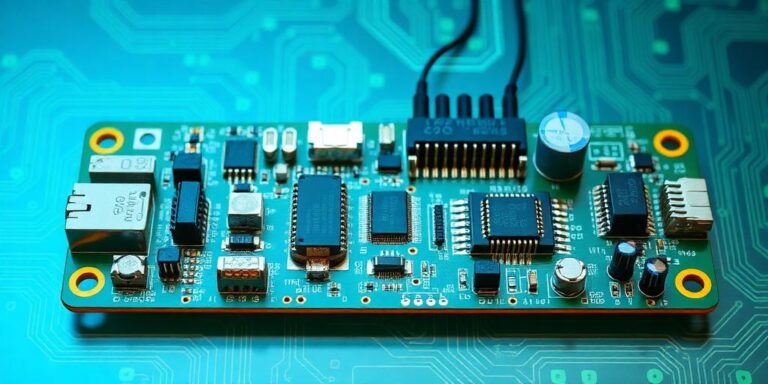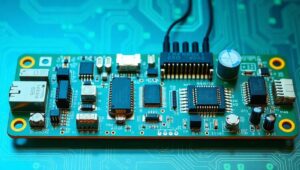Low-Power IoT Hardware Design Trends for 2026
The Internet of Things (IoT) is rapidly expanding, connecting billions of devices across various sectors, from smart homes to industrial automation. As we move towards 2026, the demand for low-power IoT hardware is becoming increasingly critical. This article explores the key trends shaping the design of energy-efficient IoT devices, enabling longer battery life and reduced operational costs.
1. Advanced Microcontroller Units (MCUs)
MCUs are the brains of IoT devices, and advancements in their architecture are significantly impacting power consumption. Expect to see:
- Ultra-Low-Power Cores: MCUs based on ARM Cortex-M and RISC-V architectures are being optimized for minimal energy usage. These cores support multiple power-saving modes, allowing devices to operate in sleep mode for extended periods.
- Integrated Peripherals: MCUs are integrating more peripherals, such as sensors, communication interfaces (e.g., Bluetooth Low Energy, LoRaWAN), and security features. This reduces the need for external components, lowering overall power consumption and board size.
- Energy Harvesting: Some MCUs are designed to interface with energy harvesting sources like solar, thermal, and piezoelectric generators, enabling self-powered IoT devices.
2. Optimized Communication Protocols
Communication is a major energy drain in IoT devices. The following trends aim to minimize this:
- Bluetooth Low Energy (BLE) 5.3: BLE 5.3 introduces connection subrating, allowing devices to negotiate shorter connection intervals, reducing power consumption during data transmission.
- LoRaWAN Advancements: LoRaWAN is evolving to support lower data rates and more efficient modulation techniques, extending the battery life of long-range IoT devices.
- NB-IoT Enhancements: Narrowband IoT (NB-IoT) is being optimized for low-power wide-area (LPWA) applications, offering improved coverage and reduced energy consumption compared to traditional cellular technologies.
3. Innovative Memory Technologies
Memory plays a crucial role in IoT devices, and new memory technologies are emerging to address power concerns:
- Low-Power RAM: Technologies like SRAM and FRAM are being refined to reduce active and standby power consumption. These memories offer fast access times and high endurance, making them suitable for frequently accessed data.
- Flash Memory Optimization: Flash memory is becoming more energy-efficient through techniques like wear leveling and advanced power management, extending the lifespan and reducing the energy footprint of data storage.
- Emerging Non-Volatile Memories: Technologies like MRAM (Magnetoresistive RAM) and ReRAM (Resistive RAM) are gaining traction due to their ultra-low power consumption, high speed, and non-volatility, offering promising alternatives to traditional memory solutions.
4. Advanced Power Management ICs (PMICs)
PMICs are essential for regulating power distribution in IoT devices. Key trends include:
- High-Efficiency DC-DC Converters: PMICs are incorporating highly efficient DC-DC converters that minimize energy loss during voltage conversion. These converters support multiple voltage rails, allowing devices to power different components with optimal efficiency.
- Dynamic Voltage and Frequency Scaling (DVFS): PMICs are enabling DVFS, which dynamically adjusts the voltage and frequency of the MCU based on workload demands. This technique reduces power consumption during periods of low activity.
- Integrated Battery Management: PMICs are integrating battery charging, discharging, and protection circuits, ensuring safe and efficient battery operation.
5. Energy Harvesting and Wireless Power Transfer
To further reduce reliance on batteries, IoT devices are increasingly incorporating energy harvesting and wireless power transfer technologies:
- Solar Energy Harvesting: Solar cells are becoming more efficient and compact, allowing IoT devices to capture ambient light and convert it into electrical energy. These devices are suitable for outdoor applications with sufficient sunlight.
- RF Energy Harvesting: RF energy harvesting captures ambient radio waves and converts them into electrical energy. This technology is suitable for environments with high RF signal density, such as urban areas.
- Wireless Power Transfer (WPT): WPT enables devices to be charged wirelessly through inductive or resonant coupling. This technology is suitable for applications where wired charging is inconvenient or impractical.
6. Secure Hardware Design
Security is paramount in IoT, and low-power security solutions are essential:
- Hardware Security Modules (HSMs): Integrated HSMs provide secure storage for cryptographic keys and perform cryptographic operations in a tamper-resistant environment.
- Secure Boot: Secure boot ensures that only trusted software is executed on the device, preventing unauthorized code from running.
- Physical Unclonable Functions (PUFs): PUFs generate unique device identifiers based on physical variations in the hardware, providing a secure and cost-effective way to authenticate devices.
Conclusion
The trends outlined above are driving the development of low-power IoT hardware that will enable a more sustainable and connected future. By adopting these technologies, developers can create IoT devices that operate efficiently, securely, and reliably for extended periods, unlocking new possibilities across various industries.




